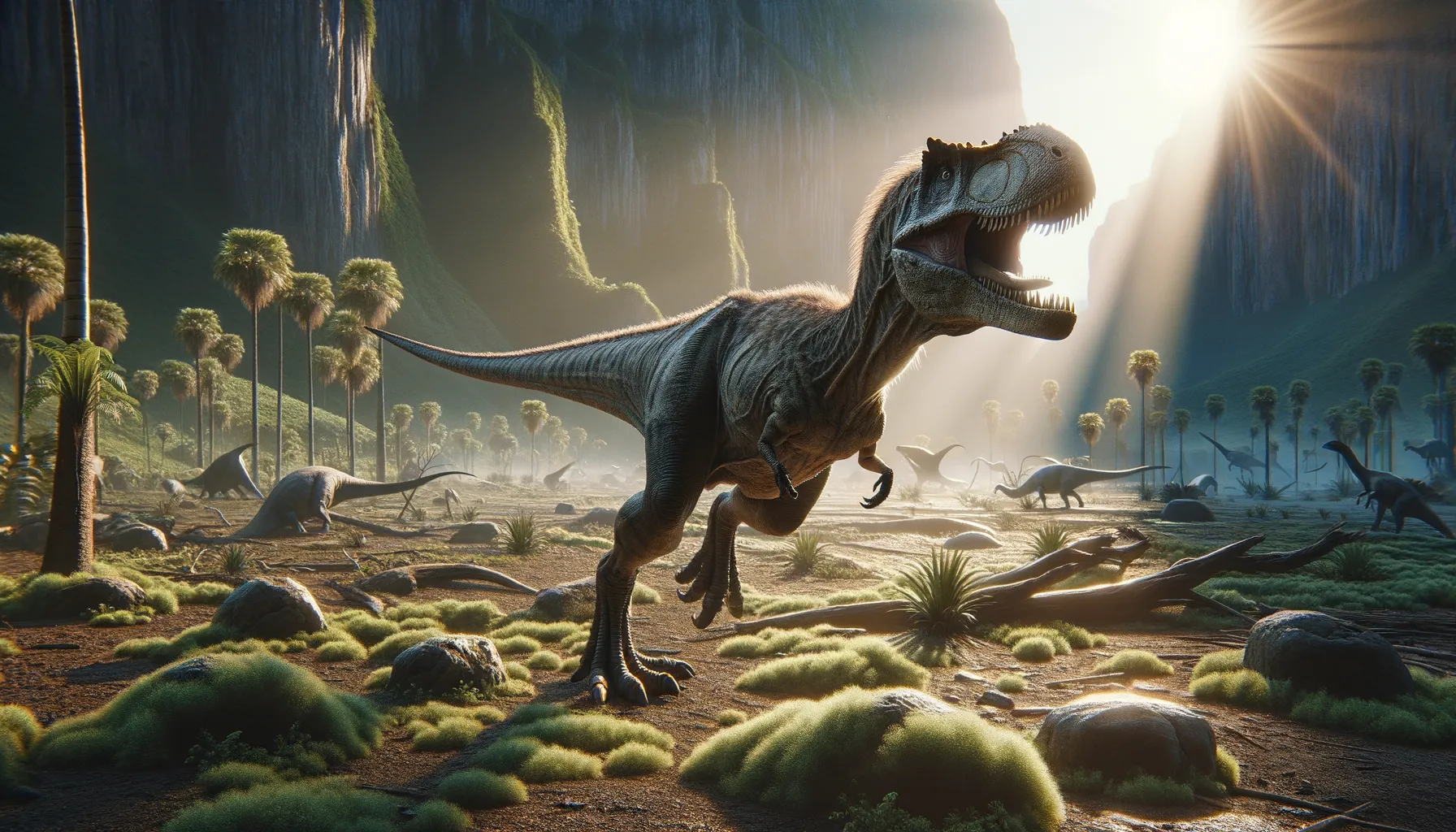
Duriavenator
Jurassic predator with a swift bite!
Period
Jurassic
Length
Approximately 4.5 to 5 meters long.
Height
Around 2 meters at the hip.
Weight
Approximately half a ton.
Duriavenator was a medium-sized theropod dinosaur that roamed what is now Europe during the Early Jurassic period. Known from fragmentary remains, it provides valuable insight into the evolution of predatory dinosaurs. With its sharp teeth and agile build, this carnivore was well-adapted for hunting smaller dinosaurs and other prey within its ecosystem. Ongoing research continues to uncover new details about its life and environment.
Diet
Duriavenator was carnivorous, primarily feeding on smaller dinosaurs and possibly other animals. Its sharp teeth and jaws were adapted to grasp and slice through flesh, indicating an active predatory lifestyle.
Hunting
This dinosaur was likely an agile and active hunter, using its speed and grasping teeth to catch prey. It may have hunted alone or in pairs, taking advantage of its stealth and agility to ambush unsuspecting victims.
Environmental challenges
During the Jurassic period, Duriavenator would have faced challenges like competition for food with other predators. Environmental shifts such as changes in sea levels and climate may have impacted its habitat and food availability. Additionally, natural disasters like volcanic eruptions could rapidly alter its environment, posing further challenges to its survival.
Speed
Estimated to have been relatively fast for its size.
Lifespan
Estimated to live up to several decades, similar to other theropods.
First discovery
Discovered in England in the mid-19th century.
Fun Facts
- Duriavenator was a meat-eating dinosaur that lived about 170 million years ago during the early Jurassic period.
- Its name means 'Dorset hunter', named after the region of Dorset in England where its fossil was discovered.
- Duriavenator was a theropod dinosaur, which means it walked on two legs and was a carnivore.
- It is known from just a few fossil bones, which makes it one of the earlier known theropods from the Jurassic of Europe.
- Originally, it was thought to belong to the Megalosaurus genus before being classified as its own genus.
- The remains of Duriavenator were first discovered in the 19th century, but it was only officially named in 2008.
- Though not much is known about Duriavenator, it links to the early evolution and diversity of carnivorous dinosaurs.
Growth and Development
Duriavenator, like many theropods, would have experienced rapid growth during its early years. It likely reached near its full size quickly, allowing it to become a competent predator. The development of its physical characteristics, such as its teeth and skeletal structure, would have been essential for its hunting prowess.
Habitat
Duriavenator lived in a region that is now part of Europe, likely inhabiting forested areas close to water sources. During the Jurassic period, its environment was lush and verdant, offering plenty of opportunities for hunting and hiding. The changing landscapes created diverse ecosystems in which it could thrive.
Interaction with other species
Duriavenator likely competed with other predatory dinosaurs for resources. It may have preyed on smaller herbivorous species while avoiding larger predators. Evidence suggests potential interactions with other members of its species, though the extent of social behavior is unclear.
Natural lifespan
Its natural lifespan may have ranged from 20 to 30 years.
Reproduction
Duriavenator, like other theropods, reproduced by laying eggs. It likely built nests in secluded areas to protect them from predators. Parental care may have been limited after hatching, as juveniles needed to quickly fend for themselves.
Social behaviour
While direct evidence is scant, Duriavenator may have been a solitary hunter. However, it's possible that it exhibited some degree of social behavior during certain life stages, such as mating or raising young.
Fossil locations
Fossils have primarily been found in southern England. The first discovery was made in the Dorset region, providing valuable insights into its anatomy and prehistoric life. Ongoing paleontological efforts may uncover further remains across other parts of Europe.
